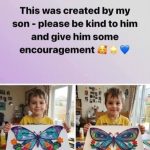The Poetry of Nature: A Pink Parrot’s Symphony Amid Blossoms


The Poetry of Nature: A Pink Parrot’s Symphony Amid Blossoms
In a quiet corner of the world where time slows to a breath and silence is filled with colors, a scene unfolds so serene and harmonious it could easily be mistaken for a dream — a pastel-pink parrot resting gently amidst a cascade of soft bougainvillea blossoms. With its delicate plumage blending into the blushing petals, this bird becomes more than an animal. It becomes a brushstroke in nature’s painting, a lyric in Earth’s untold poetry.
This image — arresting in its simplicity yet profound in its emotion — opens a window into themes far greater than the eye can capture: beauty, camouflage, fragility, adaptation, serenity, and the intimate relationship between flora and fauna. This article explores the aesthetic, biological, symbolic, and emotional resonance of this remarkable visual moment.

Nature’s Palette: An Explosion of Pink
Pink is a color often associated with tenderness, innocence, and love — emotions that seem to leap directly from this image. The bird, likely a variant of the Bourke’s Parrot or a selectively bred budgerigar or rosella, boasts a plumage so exquisitely toned that it seems custom-designed to harmonize with the bougainvillea blooms surrounding it.
The flowers themselves — likely a pink variant of Bougainvillea glabra — fan out like watercolor flames, their thin, papery petals catching sunlight and casting translucent shadows over the bird’s feathers. Light plays a starring role in this image, creating softness, depth, and emotion. The shadows dancing across the parrot’s back mimic the flow of natural time — morning light filtering through leaves, the warmth of the afternoon, and the promise of fading dusk.
This masterful color coordination is not accidental. In nature, beauty and function often coexist. The bird’s coloration, though perhaps enhanced by human breeding, is a reminder of nature’s tendency to balance form and purpose. Camouflage, attraction, communication — these are roles that color can play in the natural world.
The Pink Parrot: A Feathered Enigma
The pink bird in question is likely not a wild species but a domesticated, possibly hybrid bird. Its vibrant and uniform coloration suggests a lineage designed for companionship and visual appeal. Breeds such as the Bourke’s Parrot (Neopsephotus bourkii), known for their peaceful nature and gentle pastel colors, often exhibit pink, rose, and cream-colored feathers in selectively bred mutations.
Though not frequently seen in the wild, these birds captivate aviculturists and bird lovers alike for their calm demeanor and aesthetic beauty. Their quiet, melodic chirps and docile personalities make them symbols of tranquility — a fact well reflected in the stillness of this photograph.
But this image transcends taxonomy. The parrot, whether a Bourke’s or a Lutino Rosella, evokes a deeper emotional response. It becomes a symbol — of softness, of peace, of the rare beauty that flourishes when left undisturbed.

Bougainvillea: Paper Petals and Thorned Grace
Bougainvillea, native to South America, is a plant known for its exuberant growth and vibrant color. Despite its fragile, tissue-thin bracts (often mistaken for petals), the plant is resilient, often climbing up walls and fences with stubborn elegance. It’s a flower that thrives in sunlight and survives in drought — a paradox of delicate appearance and hardened character.
In the image, the bougainvillea’s petals mirror the pink of the parrot’s feathers. Their similar hues blur the boundary between animal and plant. The parrot’s placement among the petals gives the illusion of floral transformation, as if the bird is a blossom given life.
This connection speaks to the quiet interdependence between plants and birds. Birds aid in pollination, seed dispersal, and in return, flowers offer shelter, food, and camouflage. The harmony seen in this image is, in fact, an ancient ecological rhythm.
The Emotional Landscape: Softness in Stillness
What makes this image so compelling is not just its visual appeal but its emotional resonance. There’s a softness here that speaks directly to the human soul. The bird appears calm, contemplative even. Its gaze is downward, introspective. It is not startled by the camera, nor caught in a moment of flight or fear. Instead, it is frozen in peace.
This peace is contagious. The viewer, observing this moment, is drawn into a slower world — one of patience, warmth, and silence. In a time where our lives are consumed by noise, screens, and motion, this image offers a moment of exhale.
It reminds us to look closely — not just at birds or flowers, but at the small, quiet details that surround us every day. The curve of a petal. The glint in an animal’s eye. The shadow of a leaf. These details are where beauty hides.

Symbolism and Cultural Meaning of Pink Birds and Bougainvillea
In many cultures, pink birds — especially flamingos, parrots, and finches — are associated with love, romance, harmony, and grace. In mythology and spiritual practices, birds are often seen as messengers, and pink birds might represent messages of the heart, the soul’s yearning for peace, or the call to appreciate life’s ephemeral joys.
Bougainvillea, too, holds rich symbolic meaning. In various cultures, it symbolizes protection (due to its thorns), beauty, passion, and even welcome. In countries like the Philippines and India, it adorns homes, fences, and gates, symbolizing a greeting or a sacred boundary.
Together, the pink parrot and the pink bougainvillea become a duet of meaning — a message that beauty and strength can coexist, that softness is not weakness, and that harmony with nature is both a philosophy and a practice.
A Call to Observation: Photography as Meditation
The art of capturing such an image is not merely a technical act — it is an act of presence. To witness a moment like this requires stillness and attention. It requires the photographer to blend into the background, to listen more than they speak, and to let the natural world perform unprovoked.
Photographing birds is notoriously difficult. Birds are quick, alert, and easily spooked. To photograph one in such a serene pose among such intricate flora is a minor miracle. This image is a reward for patience.
It is also a form of meditation. In capturing nature’s quiet moments, we train ourselves to be more present. We become students of light, shadow, color, and composition — and by extension, students of life.
Reflections on Beauty, Impermanence, and Wonder
Beauty, in its purest form, is not permanent. The flowers in this photo will wither. The bird will eventually fly away. The light will change. And yet, for a moment, they align — a brief flash of harmony captured forever in a frame.
This impermanence is not something to mourn, but something to cherish. Like a haiku or a whispered song, the brevity of the moment is what makes it meaningful. The photo is not just a record of what was, but a celebration of what can be — if only for a moment.
In a world that too often demands productivity over presence, this image urges us to be still. To see. To feel. To breathe.
Conclusion: A Feather Among Flowers
The image of the pink parrot amidst pink bougainvillea is more than a photograph — it’s a poem, a prayer, a moment of visual music. It captures the elegant symbiosis of life, the dialogue between petal and plume, and the beauty that emerges when the world pauses.
It’s a reminder that not all art is made by humans. Sometimes, the most breathtaking compositions occur when we’re lucky enough to witness what nature already knows: that color, softness, light, and life — when combined with stillness — create magic.
So the next time you find yourself rushing past a flower or ignoring the soft flutter of wings in a tree, pause. There may be a parrot in the petals, a heartbeat in the branches, a world of beauty waiting for your attention.


